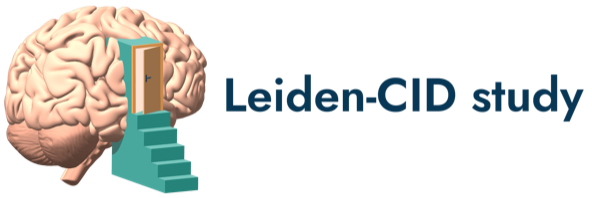-
measure Stroop color-word task
Study: Netherlands Twin Register Mode of collection: MeasurementsAndTests Behavioral/cognitive task Available measurements: Young Netherlands Twin Register YC_BS1 YC_BS2 YE_ATTEF2 YC_ADHMRI YE_COG18The Stroop color-word task consists of pairs of conflicting word and color stimuli, both being inherent aspects of the same symbols, presented simultaneously, for example a name of one color printed in the ink of another color. The difference in time for reading the words printed in colors and the same words printed in black is the measure of the...Created October 17, 2024 • Updated October 20, 2024 -
measure Eriksen flanker task
Study: Netherlands Twin Register Mode of collection: MeasurementsAndTests Behavioral/cognitive task Available measurements: Young Netherlands Twin Register YC_BS1 YE_ATTEF2 YC_ADHMRIThe Eriksen Flanker task is a response inhibition test used to assess the ability to suppress responses that are inappropriate in a particular context. During the task, participants are presented with a central target stimulus (e.g., letter, arrow) and are asked to identify the identity or direction of the central stimulus, while ignoring surrounding...Created October 17, 2024 • Updated October 20, 2024 -
measure Spatial N-back Task
Study: Netherlands Twin Register Mode of collection: MeasurementsAndTests Behavioral/cognitive task Available measurements: Young Netherlands Twin Register YC_BS1 YC_BS2 YE_COG18The Spatial N-back Task assesses visuospatial working memory. In the task, participants are instructed to remember and respond to the location of a stimulus on the screen throughout the task, either directly following the stimulus, or with a delay of one or more stimuli.Created October 17, 2024 • Updated October 20, 2024 -
measure Raven's Progressive Matrices Test (RPM)
Study: Netherlands Twin Register Mode of collection: MeasurementsAndTests Behavioral/cognitive task Available measurements: Young Netherlands Twin Register YC_BS1 YC_BS2 YE_ATTEF3Raven's Progressive Matrices (often referred to simply as Raven's Matrices or RPM) is a non-verbal test used to measure general intelligence and abstract reasoning. It is one of the most common tests administered to both groups and individuals ranging from 5-years-olds to the elderly. It consists of 60 multiple choice questions, listed in order of...Created October 17, 2024 • Updated October 20, 2024 -
measure Strengths and Difficulties Questionnaire (SDQ)
Study: Netherlands Twin Register Mode of collection: SelfAdministeredQuestionnaire Available measurements: Young Netherlands Twin Register YS_REFThe Strengths and Difficulties Questionnaire (SDQ) is a brief questionnaire for assessing the psychosocial adjustment of children and adolescents. Versions are available for parents and teachers of 4- to 16-year-olds, and a nearly identical version can be completed independently by 11- to 16-years olds. The SDQ differs from related instruments in that it...Created October 17, 2024 • Updated October 20, 2024 -
measure Corsi block-tapping task
Study: Netherlands Twin Register Mode of collection: MeasurementsAndTests Behavioral/cognitive task Available measurements: Young Netherlands Twin Register YC_BS1 YC_BS2 YC_BS3 YE_COG18The Corsi block tapping task assesses short-term visuospatial working memory. In the task, participants participants are presented with a sequence of blocks tapped in a specific order, and they must replicate the sequence by tapping the blocks in the same order. The task becomes progressively more challenging with longer sequences, serving as a measure of...Created October 17, 2024 • Updated October 20, 2024 -
measure Pi Inspection Time Task
Study: Netherlands Twin Register Mode of collection: MeasurementsAndTests Behavioral/cognitive task Available measurements: Young Netherlands Twin Register YC_BS1 YC_BS2 YE_COG18In the inspection time (IT) paradigm, participants view two lines of unequal length (called the Pi-figure) for a short exposure time, and then judge which of the two lines is longer.Created October 17, 2024 • Updated October 20, 2024 -
measure Raven's Progressive Matrices Test (RPM) - set I
Study: Generation R Mode of collection: MeasurementsAndTests Behavioral/cognitive task Available measurements: Generation R 5-6 yearsRaven's Progressive Matrices (often referred to simply as Raven's Matrices or RPM) is a non-verbal test used to measure general intelligence and abstract reasoning. It is one of the most common tests administered to both groups and individuals ranging from 5-years-olds to the elderly. It consists of 60 multiple choice questions, listed in order of...Created October 17, 2024 • Updated October 20, 2024 -
measure Brief Problem Monitor - Youth form (BPM-Y)
Study: Generation R Mode of collection: SelfAdministeredQuestionnaire Available measurements: Generation R 9-10 years Covid questionnairesThe Brief Problem Monitor (BPM) 6-18 is part of the Achenbach System of Empirically Based Assessment (ASEBA) taxonomy and is a validated instrument to assess psychiatric symptoms in both clinical and research settings. The brief ASEBA parent/teacher/self report version for youths 6 to 18 years old includes the scales Attention Problems, Internalizing,...Created October 17, 2024 • Updated October 20, 2024 -
measure Strengths and Difficulties Questionnaire (SDQ) - Prosocial behavior
Study: Generation R Mode of collection: SelfAdministeredQuestionnaire Available measurements: Generation R 5-6 years 9-10 yearsThe Strengths and Difficulties Questionnaire (SDQ) is a brief questionnaire for assessing the psychosocial adjustment of children and adolescents. Versions are available for parents and teachers of 4- to 16-year-olds, and a nearly identical version can be completed independently by 11- to 16-years olds. The SDQ differs from related instruments in that it...Created October 17, 2024 • Updated October 20, 2024 -
measure Child Behavior Checklist (CBCL) 1½-5
Study: Generation R Mode of collection: SelfAdministeredQuestionnaire Available measurements: Generation R 1.5 years 3 years 5-6 yearsThe Child Behavior Checklist (CBCL 1½-5) is part of the Achenbach System of Empirically Based Assessment (ASEBA) taxonomy and is a validated instrument to assess psychiatric symptoms in both clinical and research settings. The ASEBA parent report version for youths 1½ to 5 years of age (CBCL 1½-5) includes the syndrome scales Emotionally Reactive,...Created October 17, 2024 • Updated October 20, 2024 -
measure Children’s Behavior Questionnaire (CBQ)
Study: Generation R Mode of collection: SelfAdministeredQuestionnaire Available measurements: Generation R 5-6 yearsThe Children’s Behavior Questionnaire (CBQ) is a caregiver report that measures temperament in children aged 3 to 7 years. Domains of the CBQ include positive and negative emotion, motivation, activity level, and attention.Created October 17, 2024 • Updated October 20, 2024 -
measure Neuropsychological development (NEPSY-II-NL)
Study: Generation R Mode of collection: MeasurementsAndTests Behavioral/cognitive task Available measurements: Generation R 7 yearsThe NEPSY-II-NL is a Dutch adaptation of the NEPSY-II which assesses neuropsychological functioning. The test battery consists of 34 subtests that assess four domains: Attention and executive functions, Language, Memory and learning, Sensorimotoric integration, Social cognition, and Visuospatial processing.Created October 17, 2024 • Updated October 20, 2024 -
measure Early Adolescent Temperament Questionnaire - Effortful control (EATQ-EC)
Study: L-CID Mode of collection: SelfAdministeredQuestionnaire Available measurements: Early Childhood Cohort ECC - T6-Covid
Middle Childhood Cohort MCC - T3 MCC - T4 MCC - T5 MCC - T5-Covid MCC - T6 MCC - T7The Early Adolescent Temperament Questionnaire (EATQ) is designed to specifically tap experiences common to adolescents, and is available in self- and parent-report formats. It assesses temperament and self-regulation via adaptation of scales used in studies of children and adults. It has 10 subscales: Activation Control (the capacity to perform an action...Created October 17, 2024 • Updated October 20, 2024 -
measure Strengths and Difficulties Questionnaire (SDQ)
Study: L-CID Mode of collection: SelfAdministeredQuestionnaire Available measurements: Early Childhood Cohort ECC - T1 ECC - T2 ECC - T3 ECC - T4 ECC - T5 ECC - T6 ECC - T6-Covid
Middle Childhood Cohort MCC - T1 MCC - T2 MCC - T3 MCC - T4 MCC - T5 MCC - T5-Covid MCC - T6 MCC - T7The Strengths and Difficulties Questionnaire (SDQ) is a brief questionnaire for assessing the psychosocial adjustment of children and adolescents. Versions are available for parents and teachers of 4- to 16-year-olds, and a nearly identical version can be completed independently by 11- to 16-years olds. The SDQ differs from related instruments in that it...Created October 17, 2024 • Updated October 20, 2024 -
measure Strengths and Difficulties Questionnaire (SDQ)
Study: YOUth Mode of collection: SelfAdministeredQuestionnaire Available measurements: Baby and Child 3 years 6 years
Child and Adolescent 9 years 12 yearsThe Strengths and Difficulties Questionnaire (SDQ) is a brief questionnaire for assessing the psychosocial adjustment of children and adolescents. Versions are available for parents and teachers of 4- to 16-year-olds, and a nearly identical version can be completed independently by 11- to 16-years olds. The SDQ differs from related instruments in that it...Created October 17, 2024 • Updated October 20, 2024 -
measure Strengths and Weaknesses of Attention-Deficit/Hyperactivity Disorder Symptoms...
Study: YOUth Mode of collection: SelfAdministeredQuestionnaire Available measurements: Child and Adolescent 9 yearsThe Strengths and Weaknesses of Attention-Deficit/Hyperactivity Disorder Symptoms and Normal Behavior Scale (SWAN) is an 18-item parent questionnaire for children and adolescents under 18 years old. This rating scale includes positive “weaknesses” and negative “strengths” scoring, assessing symptoms of Attention-Deficit/Hyperactivity Disorder.Created October 17, 2024 • Updated October 20, 2024 -
measure Early Adolescent Temperament Questionnaire-Revised (EATQ-R)
Study: YOUth Mode of collection: SelfAdministeredQuestionnaire Available measurements: Child and Adolescent 9 years 12 yearsThe Early Adolescent Temperament Questionnaire (EATQ) is designed to specifically tap experiences common to adolescents, and is available in self- and parent-report formats. It assesses temperament and self-regulation via adaptation of scales used in studies of children and adults. It has 10 subscales: Activation Control (the capacity to perform an action...Created October 17, 2024 • Updated October 20, 2024 -
measure Child Gap Overlap Task - Antisaccade
Study: YOUth Mode of collection: MeasurementsAndTests Eyetracking Available measurements: Baby and Child 6 years
Child and Adolescent 9 years 12 yearsThe Gap-overlap task is a gaze contingent paradigm that measures visual attention shifting between a central and a peripheral stimulus. This is thought to be a key process underlying behavioral control. The Gap-overlap task contains three conditions; i) Gap, in which the central stimulus disappears 200ms before the appearance of the peripheral target; ii)...Created October 17, 2024 • Updated October 20, 2024 -
measure Child Gap Overlap Task - Prosaccade
Study: YOUth Mode of collection: MeasurementsAndTests Eyetracking Available measurements: Baby and Child 6 years
Child and Adolescent 9 years 12 yearsThe Gap-overlap task is a gaze contingent paradigm that measures visual attention shifting between a central and a peripheral stimulus. This is thought to be a key process underlying behavioral control. The Gap-overlap task contains three conditions; i) Gap, in which the central stimulus disappears 200ms before the appearance of the peripheral target; ii)...Created October 17, 2024 • Updated October 20, 2024




